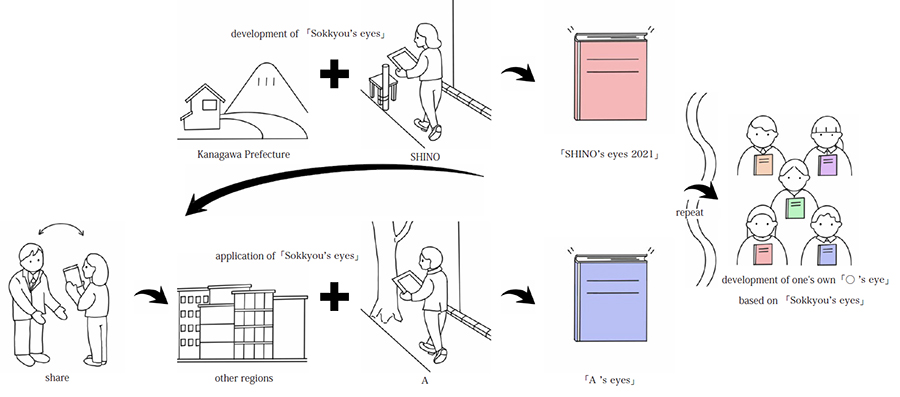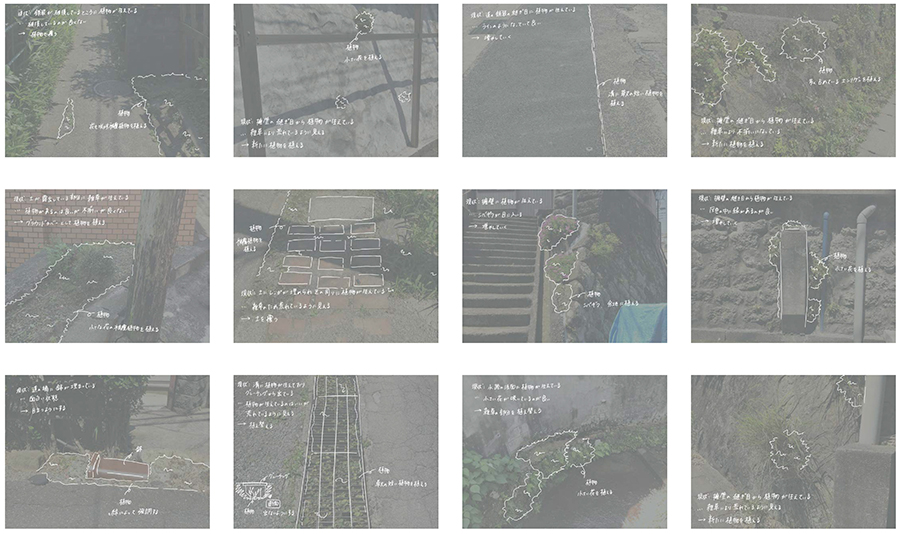Evolving Design Method
-
Shino Fujisawa critically observed that the pattern language has universalized and fixed what comfortable spaces are. She devised a system for designers to share the knowledge gained from repeated spatial experience and improvisational design, and evolve it into an updating method that respects placeability.
She visited 32 cities, towns, and villages throughout Kanagawa Prefecture and 18 wards of Yokohama City, and recorded a total of 3,220 street spaces as a composition of "foundations" such as retaining walls and walls, and "appendages" such as plants and signboards. In addition, improvised designs were made for these spaces (the image above is a part of the improvised designs). The analysis of the tendency of the improvised design revealed that there are "actions" to emphasize the space and "additions" such as boards and plants as operations to improve and preserve the space. There were four types of "actions" (improvement, utilization, enhancement, and retention) and nine types of "additional" elements (boards, chairs, bulletin boards, plants, coloring, potted plants, strings, blocks, and sticks), and 36 different ways of updating by combining these elements.
In addition, Shino named the collection of updating techniques she constructed during her two-year master's research "Sokkyou's eyes," and envisioned a system in which she would share it with others, who would then practice spatial experience and improvisational design in other areas, develope the collection of updating techniques, and further share it with others (see figure below).

drawn by Shino Fujisawa
Her attempt foreshadows the sharing and evolution of design methods in the Web3 era. -
more information
Shino Fujisawa, Shuichi Murakami (2022) Issues of how to renew and communicate place inherency in the city in the future: Reports of the City Planning Institute of Japan No.20: 366-370

drawn by Shino Fujisawa





